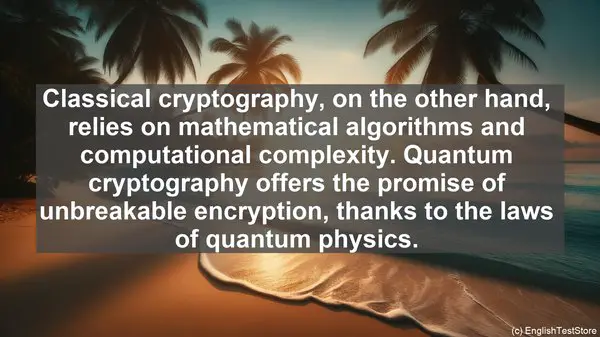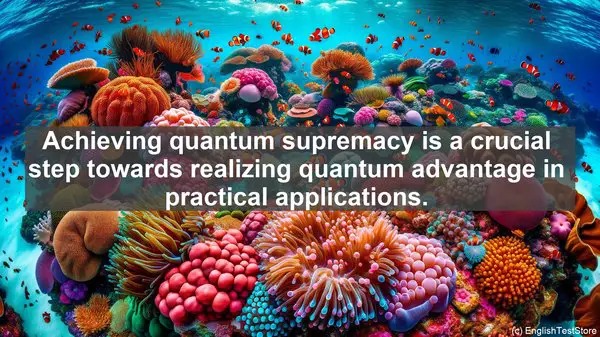Introduction: The Language of Quantum Information Science
Welcome to our lesson on the top 10 commonly confused words in Quantum Information Science. As with any field, mastering the language is essential for clear communication and comprehension. In the realm of quantum, where concepts can be abstract and counterintuitive, the right terminology becomes even more critical. So, let’s dive in and demystify these often perplexing terms!

1. Qubit vs. Classical Bit
One of the fundamental distinctions in Quantum Information Science is between qubits and classical bits. While both represent units of information, their underlying principles and behavior differ significantly. Classical bits can only be in one of two states: 0 or 1. In contrast, qubits can exist in a superposition of states, thanks to the principles of quantum mechanics. This property opens the doors to powerful quantum algorithms and computations that surpass classical capabilities.
2. Entanglement vs. Superposition
Entanglement and superposition are two cornerstones of quantum phenomena. Superposition refers to the ability of a qubit to be in multiple states simultaneously. Entanglement, on the other hand, describes the intricate correlation between two or more qubits, even when separated by vast distances. This phenomenon, famously referred to as ‘spooky action at a distance’ by Einstein, has profound implications for quantum communication and cryptography.
3. Quantum Gate vs. Quantum Circuit
In the realm of quantum computing, quantum gates and quantum circuits are essential building blocks. A quantum gate is an operation that acts on one or more qubits, transforming their states. A quantum circuit, on the other hand, is a sequence of these gates, representing a quantum algorithm. Just as classical circuits are composed of logic gates, quantum circuits combine various quantum gates to perform computations.
4. Decoherence vs. Error
Decoherence and errors are significant challenges in the practical implementation of quantum systems. Decoherence refers to the loss of quantum coherence, resulting in the degradation of qubit states. Errors, on the other hand, can occur during quantum operations, leading to incorrect results. Both decoherence and errors need to be mitigated through error correction techniques to ensure the reliability of quantum computations.
5. Quantum Teleportation vs. Classical Teleportation
While the term ‘teleportation’ might evoke images of science fiction, it has a specific meaning in the quantum realm. Quantum teleportation is the transfer of quantum information from one qubit to another, without physically moving the qubit itself. This process relies on entanglement and is fundamentally different from classical teleportation, which involves the transfer of classical information.
6. Quantum Channel vs. Classical Channel
Channels play a crucial role in both classical and quantum communication. A classical channel is a medium through which classical information is transmitted, such as a copper wire or an optical fiber. In contrast, a quantum channel is specifically designed to preserve the delicate quantum states of qubits during transmission. This necessitates specialized techniques, such as quantum error correction, to combat noise and other disturbances.
7. Quantum Cryptography vs. Classical Cryptography
Cryptography, the science of secure communication, has undergone a revolution with the advent of quantum computing. Quantum cryptography utilizes the principles of quantum mechanics, such as the no-cloning theorem and the uncertainty principle, to ensure the security of information. Classical cryptography, on the other hand, relies on mathematical algorithms and computational complexity. Quantum cryptography offers the promise of unbreakable encryption, thanks to the laws of quantum physics.

8. Quantum Algorithm vs. Classical Algorithm
Algorithms are at the heart of both classical and quantum computing. Classical algorithms, such as sorting or searching, are designed to run on classical computers. Quantum algorithms, on the other hand, leverage the unique properties of qubits, such as superposition and entanglement, to solve specific problems more efficiently. The most famous example is Shor’s algorithm, which can factor large numbers exponentially faster than any known classical algorithm, posing a significant threat to classical cryptography.
9. Quantum Simulator vs. Quantum Computer
As the name suggests, a quantum simulator is a device or software that emulates the behavior of a quantum system. It’s a valuable tool for studying and understanding quantum phenomena, especially when the resources for a full-scale quantum computer are limited. A quantum computer, on the other hand, is a physical system that harnesses the principles of quantum mechanics to perform computations. While still in their infancy, quantum computers hold the promise of revolutionizing fields such as optimization, material science, and drug discovery.
10. Quantum Supremacy vs. Quantum Advantage
Quantum supremacy and quantum advantage are two related but distinct concepts. Quantum supremacy refers to the point at which a quantum computer can solve a problem that is infeasible for any classical computer, even the most powerful supercomputers. It’s a significant milestone, showcasing the potential of quantum systems. Quantum advantage, on the other hand, is a broader term, encompassing scenarios where a quantum computer can outperform classical counterparts, albeit not exponentially. Achieving quantum supremacy is a crucial step towards realizing quantum advantage in practical applications.
